Dumbbells and kettlebells are popularly used in HIIT workouts. But is this type of training right for you? Will it help you to achieve your goals, or serve as nothing but a waste of time and money? This post explores the benefits and drawbacks of doing weighted HIIT.
The benefits of doing weighted HIIT workouts include; rapid fat loss, muscle-building, total-body toning, cost-effectiveness, and time-efficiency. Drawbacks of doing HIIT with weights include; high training intensity, muscle soreness, the requirement for good form, and money to buy the weights.
Dumbbell HIIT helped me to lose 15lbs in 3 months. But whilst HIIT workouts are generally great, they aren’t suitable for everyone.
This post shares my research and experience on doing HIIT with weights.
Hopefully, it will shed some light on whether or not this type of workout is suitable for you.
Let’s go!
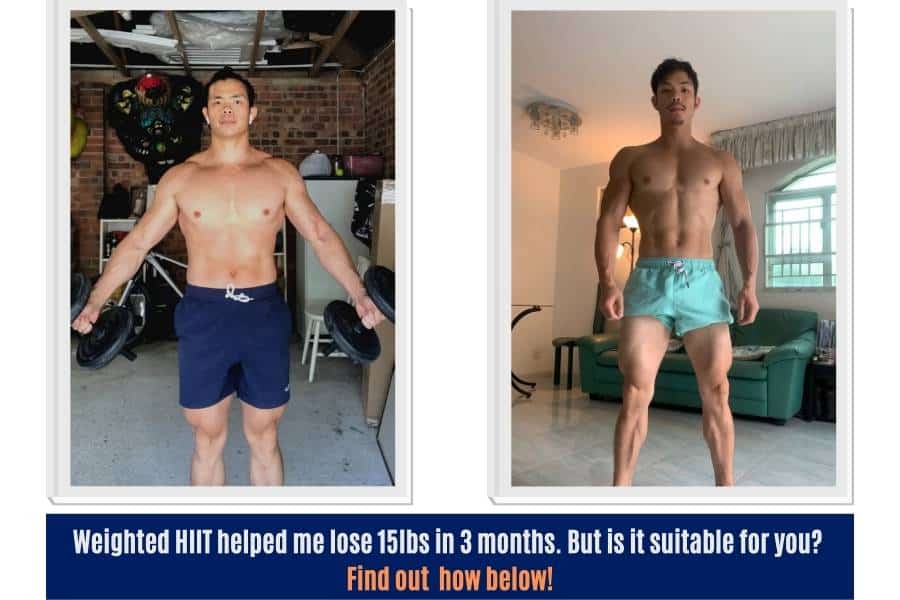
8 Benefits Of Weighted HIIT Workouts
Here are 8 benefits and advantages of doing weighted HIIT workouts:
1) HIIT Is Great For Losing Weight
Generally speaking, it’s possible for an individual to lose weight by doing HIIT workouts. However, weight loss also requires a person to be in a consistent caloric deficit in order for the body to burn calories from fat. A mild 5-10% caloric deficit is recommended for sustainable weight loss.
In other words, HIIT alone won’t lead to weight loss. You also need to watch your diet.
But HIIT can help a lot in your efforts to lose weight
The benefits of HIIT for weight loss have been indicated in this 2011 scientific review.
Here, the authors suggest that HIIT has positive implications for increased fat oxidation (aka fat-burning) and glucose tolerance (how well your body moves sugar to the muscles to be used for energy rather than being stored as fat).
2) Weights Increase The Calorie Expenditure Of HIIT Workouts
HIIT workouts are more effective when weights are added to the exercises. Weighted HIIT exercises increases exercise difficulty since the added resistance forces the muscle to contract harder in order to move the weight. As a result, an individual can burn more calories and build more muscle.
This has been shown in a 2002 study which demonstrated that 24 weeks of weight training significantly increased muscle mass and decreased whole-body fat in a group of study subjects.
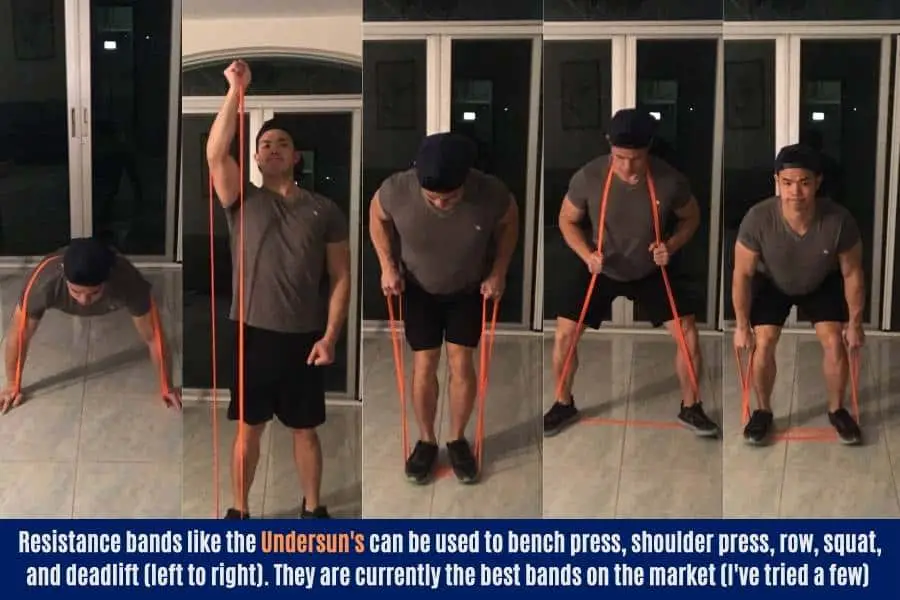
Any type of resistance training equipment works great for weighted HIIT:
- Resistance bands.
- Dumbbells.
- Kettlebells.
By using weights to increase the difficulty of your HIIT exercises, you’ll also make your workouts more effective!
If you’re interested in using dumbbells to burn fat, you can check out my other post for a complete guide on losing weight with dumbbells.
3) Weighted HIIT Workouts Can Build Muscle
HIIT workouts are an effective way for beginners to build muscle and lose fat. Furthermore, doing weighted HIIT exercises will increase the effectiveness of a workout compared to doing bodyweight HIIT exercises. Dumbbells, kettlebells, and resistance bands are popular ways to do weighted HIIT.
Look:
Building muscle simply boils down to challenging your muscles by lifting heavy objects.
And as a beginner, doing HIIT is better for building muscle than doing no HIIT. Likewise, doing weighted HIIT is better than doing bodyweight HIIT.
So if you want to build muscle and/or lose fat, then weighted HIIT workouts will benefit you greatly in achieving your goals!
4) Doing Weighted HIIT Tones Your Body
Weighted HIIT workouts are one of the most effective ways to quickly tone the body. Toning the body requires an individual to decrease body fat percentage and increase muscle size. And HIIT exercises are great for burning fat and building lean muscle.
So if you’re looking to transform a sausage-shaped physique into a defined physique, then you should consider adding dumbbells or kettlebells to your HIIT program.
The weights don’t have to be too expensive either.
Generally speaking, men should aim to use 15lb weights whilst women can use 7lb weights. Both are relatively inexpensive.
I like to use dumbbells for my weighted HIIT workouts since they’re convenient to store
For more information on how to use dumbbells to increase arm definition, you can check out my other article to find out what dumbbell weight you need to tone your arms.
5) HIIT Is Great For Burning Arm, Belly, And Thigh Fat
Undertaking a HIIT program is a good way to burn arm, belly, and thigh fat. Effective fat-burning requires an individual to expend more calories than they consume. Therefore, combining HIIT workouts with a calorie deficit diet can help someone to burn more fat.
Take a look at this 2018 study for example- it showed that in 617 test subjects, HIIT outperformed steady-state running and cycling in reducing abdominal fat.
And as you now know- doing weighted HIIT confers even greater fat-burning benefits compared to bodyweight HIIT alone!
6) Weights Are A Cheap Way To Supercharge HIIT Workouts
Free weights are a cost-effective way to maximize the results of a HIIT program. Dumbbells and kettlebells do not need to be heavy to gain the full benefits of a weighted HIIT workout. Light dumbbells and kettlebells are affordable and serve as an effective way to increase exercise intensity.
For a better idea, take a look at the calorie-expenditure comparison table below:
| Exercise Type | Typical Calories Burned In 30 Minutes | Muscle-Building Potential |
|---|---|---|
| Dumbbell/kettlebell HIIT | 450 cal | High |
| Bodyweight HIIT | 306 cal | Moderate |
You can see that just by adding a pair of light dumbbells to your HIIT workout, you can burn more calories and build more muscle
If you’re interested, you can check out my other article for more details on what dumbbell weight you need for HIIT and Tabata workouts.
7) Weighted HIIT Workouts Don’t Require Much Space
Weighted HIIT workouts are a space-effective way to build lean muscle, lose fat, and tone at home. A weighted HIIT exercise typically requires approximately 5 to 10 square feet of space to perform. Additionally, dumbbells, kettlebells, and resistance bands require very little storage space.
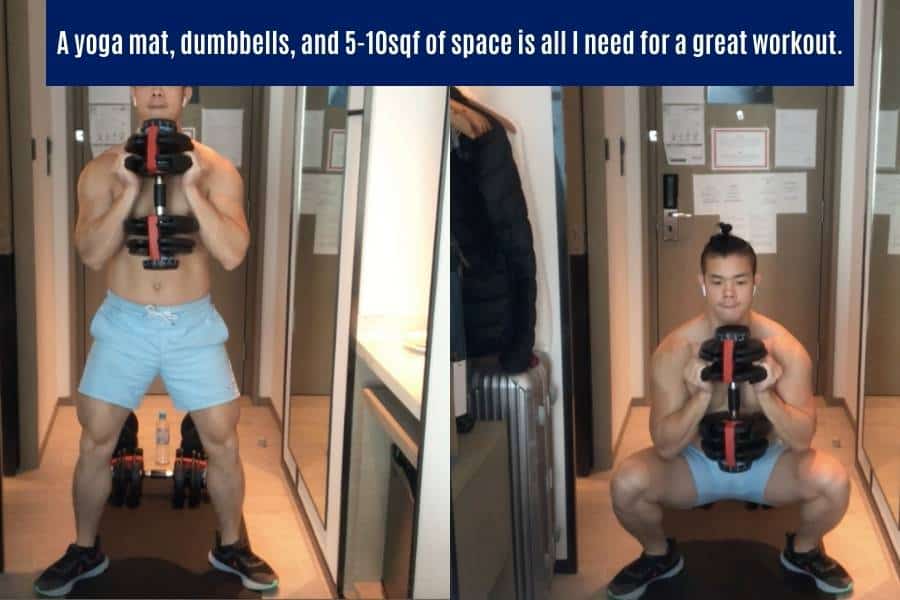
Unlike a treadmill or bike machine, free weights take up very little space.
All you need are the weights and a cheap yoga mat.
Additionally, modern dumbbells and kettlebells are fully-adjustable.
This means they pack multiple weight increments into a single unit.
So if you’re looking to do a fat-torching workout without sacrificing too much space in a small apartment, then weighted HIIT workouts will provide awesome benefits for you.
8) Weighted HIIT Workouts Burn Fat And Build Muscle Fast
Weighted HIIT workouts are a fast way to burn fat and build muscle. Adding weights to a HIIT workout can increase calorie expenditure by 50% compared to a bodyweight HIIT workout. If the weight is heavy enough, then a weighted HIIT workout will simultaneously promote muscle growth and fat loss.
Take a look at the table below for a better idea of how weighted HIIT workouts can give you more bang for your buck compared to not using weights at all:
| Exercise Type | Typical Calories Burned In 30 Minutes | % Difference |
|---|---|---|
| Dumbbell/kettlebell HIIT | 450 cal | +47% |
| Bodyweight HIIT | 306 cal | 0% |
| Dumbbell strength workout | 216 cal | -29% |
So if you’re looking to burn the most calories in the shortest period of time, then weighted HIIT exercises will provide great benefits for you.
8 Drawbacks Of Weighted HIIT Workouts
Here are 8 drawbacks and disadvantages of doing weighted HIIT workouts:
1) Weighted HIIT Requires Initial Equipment Investment
Weighted HIIT workouts require capital investment to purchase a suitable set of weights. Generally speaking, dumbbells and kettlebells suitable for HIIT exercises will cost around $80-250. People with more training experience will require heavier and more expensive weights for an effective workout.

Whilst $80-250 is affordable for most people, it’s still a significant financial investment. And this can be a drawback to doing weighted HIIT.
That said, the weights will last you a lifetime.
You may be interested in my other article which reveals the best dumbbells for HIIT workouts!
2) HIIT Workouts Can Be Too Intense For Beginners
HIIT workouts are not suitable for everyone. An effective HIIT workout requires the participant to increase heart rate by 70-90% of their maximum heart rate. As a result, beginners can often find this type of training to feel too intense. Weighted HIIT workouts will further increase intensity.
This can be seen as both a benefit or drawback to weighted HIIT workouts, depending on how you look at things.
High-intensity exercises will naturally burn more fat and build more muscle.
But don’t expect these types of workouts to feel easy!
Therefore beginners should practice bodyweight HIIT exercises before transitioning to weighted HIIT workouts.
3) Weighted HIIT Exercises Require Good Form
Generally speaking, weighted HIIT exercises require a person to lift with good form. This is essential for recruiting all the target muscles and promoting the maximum fat-burning and muscle-building benefits of weighted HIIT exercises. This can take time and effort to perfect.
An effective HIIT workout is predicated on increasing heart rate as quickly as possible by recruiting as many muscles as fast as possible.
Therefore HIIT exercises need to be executed properly for maximum benefits.
Take the bench press as an example: you should ensure you’re pushing with the pectorals as well as the arms in order to maximize exercise intensity.
As a beginner, learning proper form can take time to learn how to do it effectively.
4) Weighted HIIT Movements Can Be Hard For Beginners
Weighted HIIT movements are often highly dynamic and complex exercises. They usually require multiple muscle groups to work synchronously around multiple joints. Therefore beginners should spend time practicing these movements in order to perform them safely and effectively during a workout.
To be honest, it’s a good idea to practice good form in any weight training exercise.
It’s just particularly important in weighted HIIT workouts since you’ll often be pushing yourself to full-fatigue, and this can be a big drawback since the risk of injury also increase.
That being said, there are beginner-friendly exercise variations available.
You may be interested in my other article to learn about the best dumbbell HIIT/Tabata exercises that helped me to lose 15lbs in 3 months!
5) Muscle Soreness After Doing HIIT With Weights
HIIT exercises are inherently performed at a high intensity and this can promote post-exercise muscle soreness. This can be a major drawback for beginners who are looking to undertake a HIIT program. Furthermore, doing HIIT with weights increases the likelihood of muscle soreness.
Whilst a bit of soreness can make you feel like you’ve done a worthwhile workout, too much soreness can be extremely uncomfortable.
And if you jump straight into doing HIIT with weights, without practicing bodyweight HIIT exercises first, you increase the likelihood of severe muscle soreness.
6) Weighted HIIT Workouts Need Dedicated Exercise Space
HIIT workouts generally require 5-10 square feet of floor space to perform. This can be seen as a pro or con for someone looking to do HIIT, depending on the amount of space available. Bodyweight, dumbbell, and kettlebell HIIT workouts generally require the least amount of space to perform.
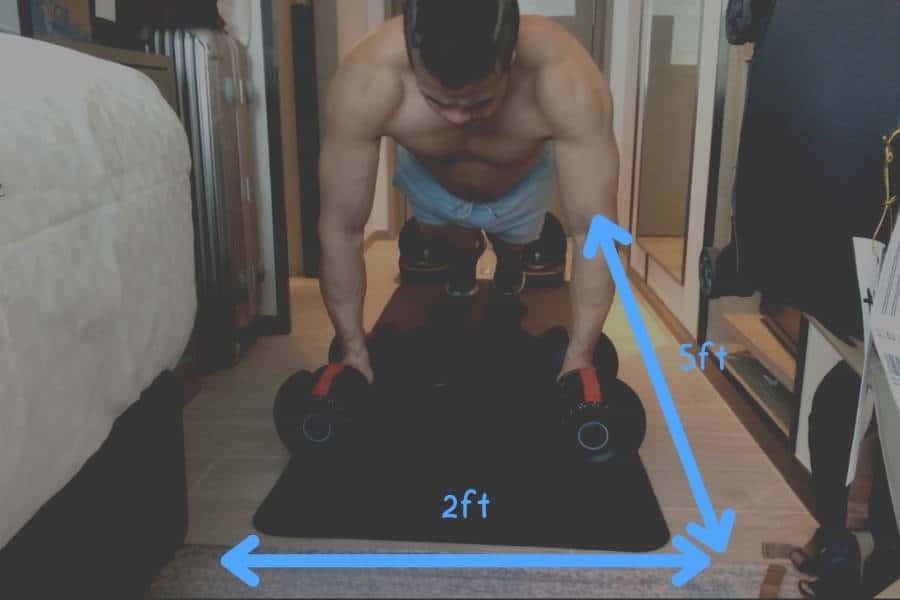
For most people, 5-10 square feet of floor space for a workout is acceptable.
But if you’re living in a small apartment, then this can be a major drawback to doing weighted HIIT workouts.
7) HIIT Workouts Can Increase Hunger Levels
HIIT workouts can increase post-workout hunger levels in participants. This is because HIIT works both the aerobic and anaerobic energy systems. As a result, blood sugar levels can be rapidly depleted and this can lead to feelings of hunger. Weighted HIIT will make this effect more pronounced.
After an intense session of HIIT with weights, you may feel particularly ravenous.
And if these feelings aren’t reigned in, they can actually cause you to overeat and defeat the purpose of doing the workout in the first place!
8) Can Be Difficult To Judge If You’re Working Hard Enough
The best way to determine if a HIIT session is working is by using a heart rate monitor. The recommended target heart rate is 125-170 beats per minute for a 30-year-old. Without a heart rate monitor, it can be difficult for beginners to judge if they are working hard enough.
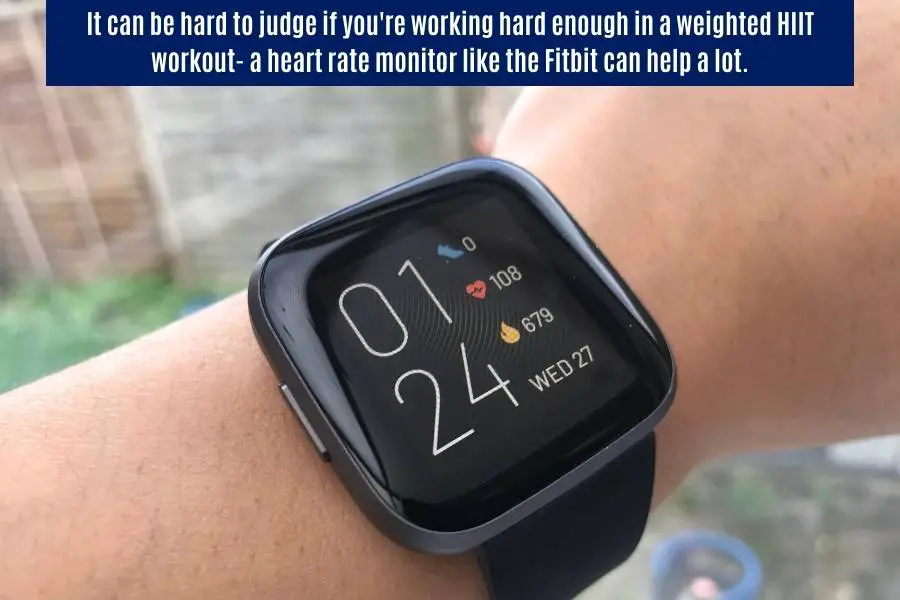
And when you misjudge your effort levels, you run the risk of either overworking (and increasing injury risk) or underworking (and wasting your time).
I use the Fitbit Versa to monitor my heart rate in real time when I’m doing HIIT with weights.
But the Fitbit Inspire works just as well and is much cheaper.
Conclusion
That’s 7 benefits and drawbacks to doing weighted HIIT workouts with dumbbells and kettlebells!
Generally speaking, doing HIIT with weights is a potent way to lose fat and build muscle along the way.
But you better be prepared to put in an enormous amount of work and effort!
If weighted HIIT sounds like something you would benefit from, then you can check out my other post for a complete guide to doing HIIT with dumbbells (the principles can also be applied to kettlebells).
Will you be doing HIIT with weights?
Feel free to send me a message if you have any questions! You can find my details on the “contact us” page.
You may also be interested in the downloadable Kalibre Blueprint PDF which details exactly how I gained 40lbs of lean muscle (it’s 100% free!). It details the exact exercises and nutrition (with printable worksheets) I used to go from skinny to ripped!
Thanks for reading guys!
Peace Out,
Kal
(Biochemistry BSc, Biomedical Sciences MSc, Ex-Skinny Guy)


